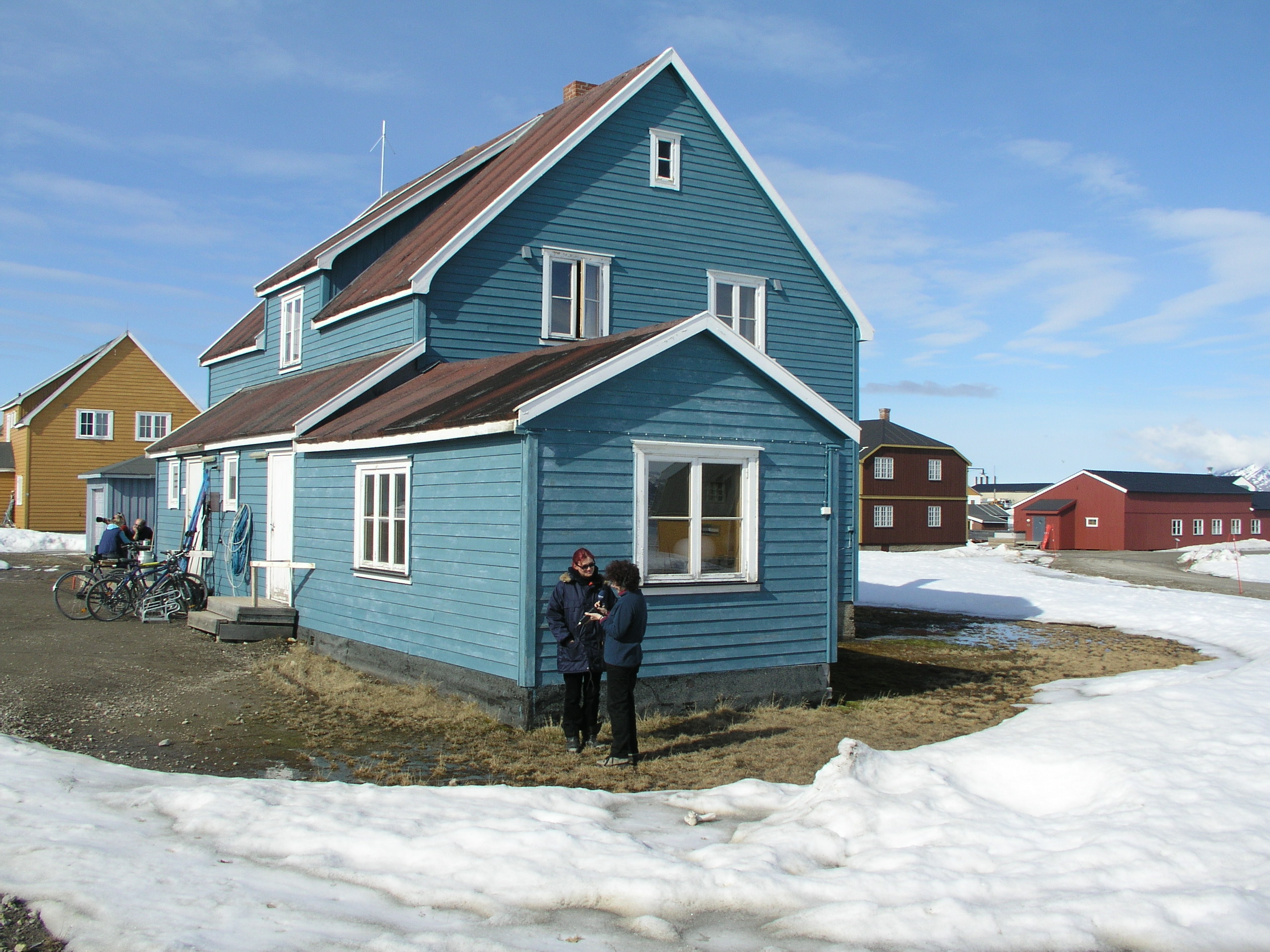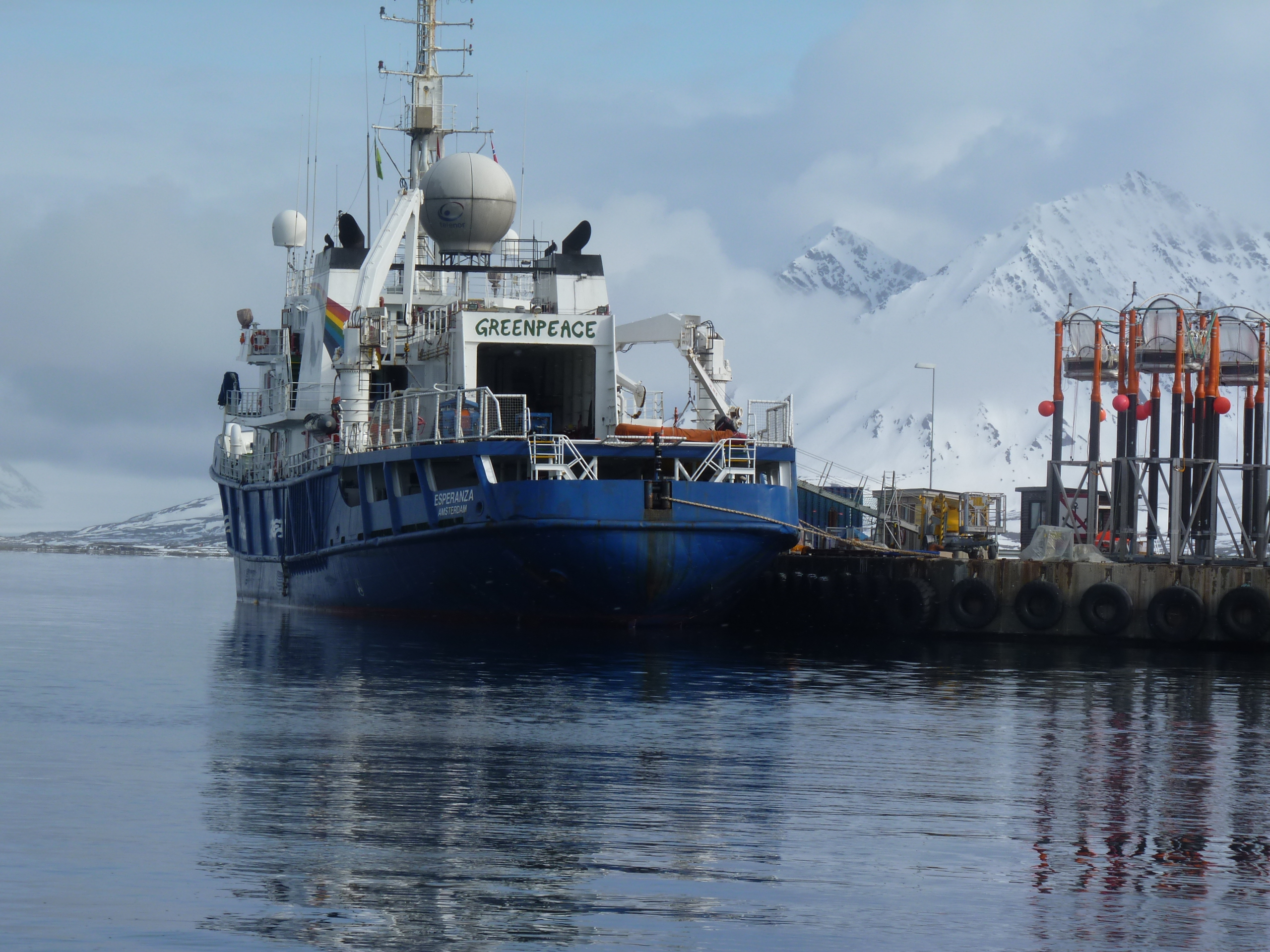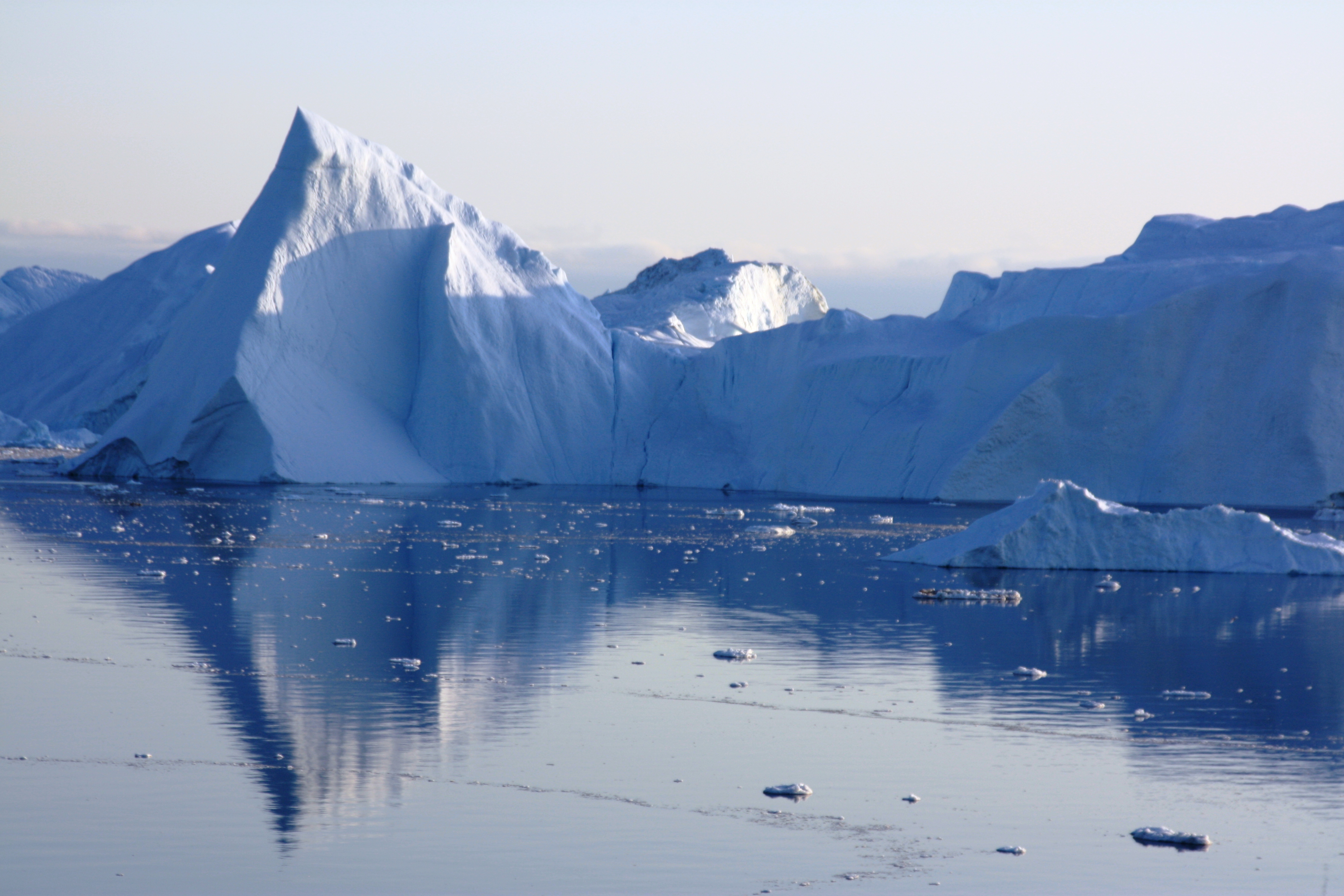Search Results for Tag: research
“An airborne mission for earth’s polar ice”

(Aerial view of Svalbard, one of my pics, iq 2007)
A lot of our information on the state of the ice cover in the Arctic and Antarctic comes from measurements from NASA. This week they invited journalists to a (climate-friendly internet-based) briefing on the progress of the IceBridge mission, which they describe as “an airborne mission for earth’s polar ice”.
A lot of it is about the technical procedures involved, so if you’re generally interested in how data gets collected by scientists flying over Antarctica (and the weather and work conditions down there) this is an interesting site to look at. There is also a blog from members of the team. They are in the Antarctic at the moment, but there is also info on the worrying state of the Arctic sea ice based on the latest measurements on the site.
Tomorrow (Thursday) they will be running a live chat on their findings so far, details on that website if you’d like to join in.
Geoengineering – the “Plan B”

(Photo: Prof. Thomas Pettke, Institute for Geology, University Bern)
Cough pastilles? Ingredients for your Christmas baking?
No, these green crystals, which can be up to a centimetre in size, are actually olivine, the major constituent of the earth’s mantle.

This is what it looks like in vulcanic rock, in this case from Mount Erebus in Antarctica. (Photo by Hannes Grobe, Alfred Wegener Institute).
So what is the green rock doing on the ice blog? Well when olivine weathers and decomposes, it can remove carbon dioxide from the atmosphere. Scientists have been conducting experiments to find out how much, and whether artificially weathering the mineral could help counteract ocean acidification.
Researchers from the Alfred Wegener Institute for Polar and Marine Research in the Helmholtz Association and the KlimaCampus of Hamburg University have just published some model calculations. They say around a ton of olivine dissolved in water would be necessary for each ton of CO2 that could be transferred from the atmosphere to the ocean using this method.They assume the method is not suitable to neutralise present-day greenhouse gas emissions completely, but could be interesting on some scale as just one factor of many.
The Alfred Wegener Institute stresses it is not out to pave the way for the commercial implementation geoengineering measures with this research. “It makes an important contribution to improving the scientific database on geoengineering methods,” says Prof. Karin Lochte,the Director of the Institute.
Given the lack of progress on the large-scale emissions reductions that would be necessary to keep global warming to the 2 degree target, it’s hardly surprising that there is a strong interest in techniques like geo-engineering, whether it be installing mirrors in space or measures like this one.
Of course there are plenty of risks involved. The recent Biodiversity Conference in Nagoya, Japan, called for more information to help assess the potential effectiveness and the risks of geoengineering to the environment and biodiversity.
There’s more detail on all this on the AWI website
Sunday morning in Ny Alesund
We didn’t get the usual 7.30 morning wake up knock on the door this morning, a Sunday treat.
Still, when I looked out onto the pier, Professor Jean-Pierre Gattuso, the coordinator of the whole EPOCA project, was out there in a shower of sleet preparing test samples.


When I looked up the fjord to the huge glaciers, there was some floating ice to be seen in the distance. The mesocosms will be placed at the other,more sheltered end, but the one thing that could cause a problem, the scientists have told me, is if the wind changes and blows the icebergs down this way. The frames for the mesocosms are very stable, but the ice could damage the plastic sacks.I\’m told there will be some kind of barrier put round to protect them, still this is the main factor causing a little apprehension as the actual deployment comes closer. The team would like to start the experiment as soon as possible, but logistics have pushed the deployment back a little, probably to start tomorrow.

The world\’s most northerly post office (open once a week I believe!) looks picturesque even in a shower of sleet.
Meanwhile, the sun has been putting in the odd appearance, although it still keeps snowing or sleeeting, which gives a lovely light to the place. I think so anyway. The place is very quiet so far, probably a mixture of Sunday and the weather. Seems a shame to me not to be out and about.
Our resident Svalbard reindeer seems to think the same. Here he’s heading across the snow:

And as the summer comes in, he’s finding more and more tasty greenery:

In the interests of science…


Ny Alesund is a very unique kind of place. On the one hand, at 79° north, it’s a really remote location. At the same time, thanks to all the scientific interest, the small village is very well equipped to provide accommodation for a small group of privileged scientists who get permission to work here for some time during “their” research season. It’s a radio-silent area to avoid disturbing sensitive measuring equipment. Imagine a place with no mobile phones!
In winter, there are only a maximum of 30 people here, including the logistics staff. I’ve just been talking to Marcus Schumacher, who was the station leader until recently and is now the coordinator of the EPOCA research project on ocean acidification. He says there’s a great community feeling, just a few people in the long, winter months. Then, in March and April the glaciologists come in, when the snow is firm enough to get to the glaciers on snowmobiles. They’ve gone now, and the others are coming in, biologists, geologists, etc.
The village is a collection of different coloured buildings, occupied by a very international set of people. The Norwegians, obviously, have a station.

The French and Germans have a combined AWIPEV station.The Chinese have a station, so do the Koreans. 4 Indian scientists have just arrived at their station.

I dropped in there this morning and had a coffee chat with some of the team. More about their work at a later stage when I’ve interviewed them on their work. I was also made welcome by the head of the Norwegian station, who is actually German. (Science is very international). Again more later on the interesting things I discussed with him. The problem with being here is there are so many interesting things going on it’s hard to decide what to write when and to make sure you don’t miss anything while you’re writing – especially since it never gets dark and there’s no clear end to the “working day” for anybody. The sun has come out today for the first time since I’ve been here, so the urge to get out and take photos while the light is good is very strong.

At the moment there’s a special buzz about the place, with the team of scientists and technicians just arrived for the EPOCA ocean acidification project. At the same time, the Greenpeace ship came in with the mesocosms and loads of other equipment supplies for the project. Marcus is coordinating all this – must be quite a challenge. All of a sudden, this small, exclusive research station has trebled its population or something like that. It also means more people sharing the laboratory space and other equipment. Sandra Heinrich, a German PhD student who’s working here on macroalgae in the fjord showed me round the marine lab today.

This is her 4th time here, and she says it’s an ideal place to work. She really feels the difference since the arrival of all the extra people.
Another interesting thing is the cooperation between science and Greenpeace. This cooperation between the ngo best known for its spectacular protests and campaigns and an established scientific research organisation is a premiere. There was a lot of discussion beforehand on whether it was a good idea. The project was having problems finding a suitable boat, because they need the equipment to be up here for 5 weeks. Greenpeace stepped in with an offer to transport the mesocosms on the Esperanza, as they were planning an Arctic expedition anyway. It all seems to be working very well, in spite of some sensitivities. I know some of the scientists are wary of being associated with a campaign group, because they don’t want to compromise their scientific neutrality or be seen to be taking sides. At the same time the issue of ocean acidification is one that’s based on chemistry and facts, so not a controversial topic like climate change.
The Greenpeace team are doing a great job, very professional and keen to facilitate the scientific research in every way possible.

Climate campaigner on the Esperanza Martin Kaiser.

Oceans campaigner Frida Bengtsson, one of my cabin-mates on the ship.
Another interesting relationship has been between some of the Norwegian seamen whose boat has been brought in to assist with some of the work. Given the country’s policy on whaling, it’s not surprising that the occasional tension has been felt. So far though, scientists, whale and seal hunters and the Greenpeace team are working well together in the interests of science and, I’m convinced, for the good of the planet.


View from my porthole.
Ocean life in a big plastic tube

The mesocosms are impressive pieces of equipment. It’s only when you see them up close and with people beside them that you realise how big they are and what a logistical challenge it is to get them up here to the Arctic and deployed in the Kongsfjord.

Professor Ulf Riebesell has been explaining to me exactly how they work.

He arrived two days ago and it’s “all systems go“, now that the season has started and the fjord is more or less ice free – at least at the point chosen here. There are nine separate “tubes“, which will be lowered from the Esperanza once everything is ready, each to contain their own little mini-cosmos of ocean life. The ocean absorbs around 30% of the CO2 we emit – good to buffer climate change, says Ulf, but bad for the creatures in the ocean that rely on calcium to form their shells or skeletons.
Co2 reacts with water and forms carbonic acid which makes oceans slowly more acidic. Lab experiments show that some organisms have a hard time, especially calcifying organisms, which need calcium to form their shells and skeletons.
On a global scale, this has implications for example for coral reefs, with their huge biodiversity, importance for coastal protection, the food supply and also for tourism. Calcifying organisms are everywhere, Ulf stresses, many organisms in ocean depend on forming calcium carbonate and are crucial links in the food webs. Scientists here will be looking particularly at a type of snail,the pteropod up to 1 cm in length, which, as our Professor puts it, have transformed their feet into wings. They’re also knows as butterflies of the sea.
They’re a key link in the food web between algae and higher trophic forms like whales etc. But they form their shells from material very susceptible to acidification. The scientists want to see what happens if they are affected by acidification, and what that would mean for the food web.
The Greenpeace boat has also transported loads of equipment the scientists will need to collect and test the samples in the Ny Alesund marine lab.

The Arctic, says Ulf, is the place to be to study ocean acidification. Cold waters take up more gas than warm. The polar oceans are close to the stage where water becomes corrosive for organisms depending on calcification. In 20-30 years some parts of Arctic will be completely corrosive for many organisms. Now that’s a scary thought.
And while there’s a lot of debate going on about what extent of climate change will have what effect – with ocean acidification, there’s no debate, Ulf says. It’s a chemical process and it’s easy to model how acidification will increase with certain levels of CO2 emissions. The big unknown is how it will affect marine life. And that’s the point of the giant test-tubes in this Arctic fjord. Unlike a lab experiment, which will look at individual organisms, the scientists here are looking at whole communities of life-forms. A daunting task – with potentially devastating results. We need to do something to reduce the CO2 emissions very, very soon, says the Kiel professor.




















Feedback